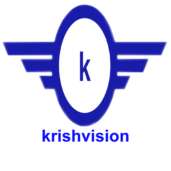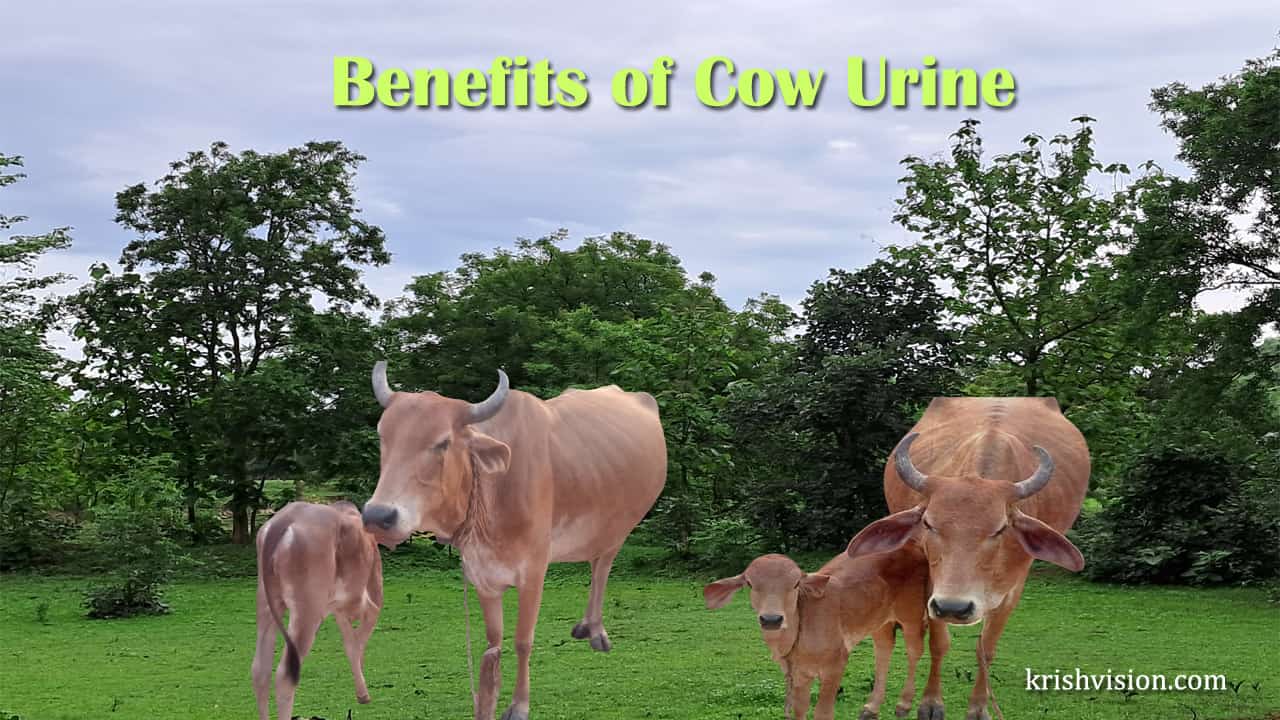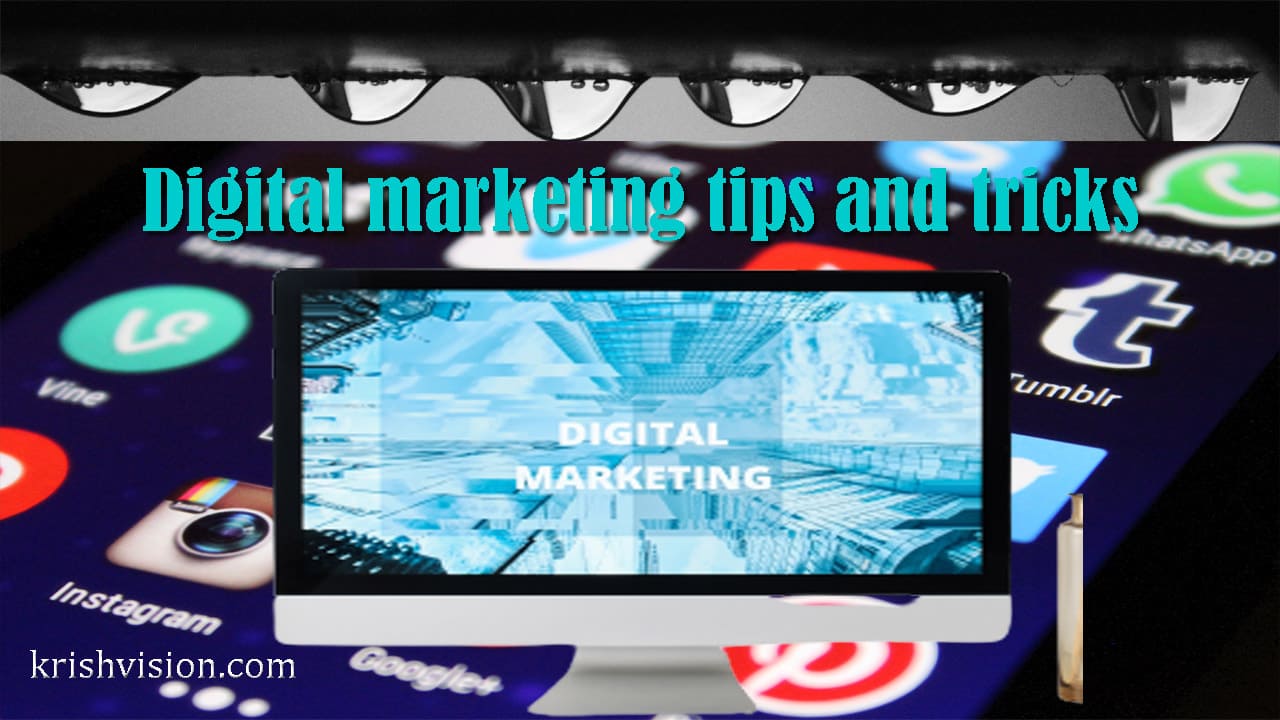
In today’s digital age, having a strong online presence is crucial for businesses and individuals alike. One of the key components of establishing and maintaining a successful online presence is website optimization. In this comprehensive guide, we will explore the importance of website optimization, various techniques, and strategies, and address frequently asked questions to help you understand and implement effective optimization practices.
Why is Website Optimization Important?
Website optimization is the process of improving your website’s performance, visibility, and user experience to attract more organic traffic from search engines and engage visitors effectively. Here are some key reasons why website optimization is important:
Improved Search Engine Rankings: Optimizing your website helps search engines understand its relevance and rank it higher in search results, increasing visibility and organic traffic.
Enhanced User Experience: A well-optimized website ensures that visitors have a positive experience, leading to longer visits, lower bounce rates, and increased conversions.
Increased Conversion Rates: By optimizing your website’s design, content, and functionality, you can create a seamless user journey that encourages visitors to take desired actions, such as making a purchase or submitting a form.
Competitive Advantage: In a saturated online market, a properly optimized website can give you a competitive edge by standing out from the competition and attracting more potential customers.
Cost-Effectiveness: Investing in website optimization provides long-term benefits and delivers a higher return on investment compared to traditional marketing strategies.
Read More! SEO Strategies for Small Business Success.
Website Optimization Techniques: A Detailed Overview
Website optimization encompasses various techniques and strategies that work together to improve different aspects of your website’s performance. Let’s explore each of these techniques in detail:
10 Unique Techniques to build self confidence
21 Inspiring Quotes to Help You Pursue Your Dreams
Amazing techniques of earning from the digital marketing sector in 2023
Benefits of Cow Urine
Challenges in Teaching Profession
Digital marketing tips and tricks
Keyword Research and Optimization
Keyword research and optimization are essential components of any successful digital marketing strategy. Keyword research involves identifying the specific words and phrases that potential customers use when searching for products, services, or information online.
By understanding these keywords, businesses can tailor their content and website to align with user intent and improve their chances of appearing in relevant search results. Keyword optimization goes hand in hand with research, as it involves strategically incorporating these keywords into website content, meta tags, headings, and other elements.
The goal is to provide search engines with clear signals about the website’s relevance and to attract organic traffic. However, it’s important to strike a balance and avoid overstuffing keywords, as search engines prioritize quality and user experience.
Effective keyword research and optimization not only enhance a website’s visibility and organic search rankings but also contribute to a better user experience. By delivering valuable and relevant content based on user queries, businesses can attract targeted traffic, increase engagement, and improve conversion rates. Ultimately, keyword research and optimization enable businesses to connect with their target audience, enhance their online presence, and achieve their digital marketing objectives.
On-Page Optimization
On-page optimization involves optimizing the elements within your web pages to improve their search engine rankings. Start by crafting compelling and descriptive title tags and meta descriptions that entice users to click on your website in search results. Ensure that your headings (H1, H2, etc.) contain relevant keywords and structure your content with proper formatting, including bullet points, lists, and tables, to enhance readability and user experience. Additionally, optimize your website’s URLs, images, and internal linking structure to provide search engines with valuable information about your content.
Read More! 21 Inspiring Quotes to Help You Pursue Your Dreams
Mobile Optimization
Mobile optimization ensures seamless and user-friendly experiences on smartphones and tablets, enhancing performance, responsiveness, and accessibility to meet the ever-growing demands of today’s on-the-go world.
Site Speed Optimization
Site speed optimization is a crucial aspect of website development that focuses on enhancing the loading time and overall performance of a website. It involves various techniques and strategies to minimize page load times and ensure a seamless user experience. By optimizing the site speed, you create a favorable environment for visitors, keeping them engaged and reducing the risk of them abandoning your site due to sluggishness.
A faster website not only improves user satisfaction but also positively impacts search engine rankings, increasing visibility and attracting more organic traffic. Investing in site speed optimization is like greasing the wheels of your online presence, enabling smooth and efficient interactions with your audience.
User Experience Optimization
User experience optimization is the art of creating a website or application that prioritizes the needs and desires of its users, delivering a seamless and delightful journey. It involves careful consideration of design, navigation, content, and functionality to ensure that every interaction is intuitive, engaging, and valuable. By focusing on user experience optimization, businesses foster stronger connections with their audience, encouraging longer visits, repeat engagement, and increased conversions.
Through thoughtful user-centric design, clear communication, and streamlined processes, user experience optimization strives to exceed expectations, leaving visitors with a lasting positive impression and a desire to return. It is the secret ingredient that transforms a mere website into an immersive and memorable digital destination.
Link Building and Off-Page Optimization
Link building and off-page optimization are essential components of a comprehensive SEO strategy that aims to boost website visibility and credibility in search engine rankings. Link building involves acquiring high-quality and relevant backlinks from other websites, signaling to search engines that your site is trustworthy and authoritative. This not only improves organic search rankings but also drives targeted traffic from referral sources.
Off-page optimization encompasses various techniques such as social media marketing, content promotion, and influencer outreach, all designed to expand brand awareness and attract valuable external links. Together, link building and off-page optimization establish a robust digital footprint, strengthening your online presence and increasing the chances of attracting qualified visitors to your website.
Read More! How to Become a Computer Expert
Social Media Integration
Social media integration is a powerful approach that seamlessly connects your website or application with popular social media platforms, enriching the user experience and expanding your online reach. By incorporating social media elements such as sharing buttons, social login options, and embedded feeds, you empower visitors to easily engage with your content and interact with your brand across multiple channels.
Social media integration also facilitates the sharing of your website’s content, fostering greater visibility and organic promotion. It enables a cohesive and interconnected online presence, allowing you to tap into the vast networks of social media users and leverage their influence to drive traffic, build brand loyalty, and ultimately, achieve your marketing goals.
Content Optimization
Content optimization is the art of refining and enhancing the quality, relevance, and visibility of your website’s content to attract and engage your target audience. It involves meticulous keyword research, strategic placement, and compelling storytelling to ensure that your content resonates with both search engines and human readers.
By optimizing your content, you increase the chances of ranking higher in search results, driving organic traffic, and establishing your authority in your industry. Additionally, content optimization focuses on improving readability, user experience, and shareability, encouraging visitors to stay longer, share your content, and ultimately convert into loyal customers. It’s a powerful tool that breathes life into your digital presence and captivates your audience with valuable and meaningful information.
Technical SEO
Technical SEO is the backbone of a well-optimized website, working behind the scenes to ensure that search engines can effectively crawl, index, and understand your site’s content. It involves optimizing technical elements like website speed, mobile-friendliness, URL structure, and XML sitemaps. By addressing these technical aspects, you create a solid foundation for improved search engine visibility and user experience.
Technical SEO helps search engines recognize the value and relevance of your content, leading to higher rankings and increased organic traffic. It’s like fine-tuning the engine of your website, ensuring it runs smoothly and efficiently, providing users with a seamless browsing experience and search engines with clear signals of your website’s authority and relevance.
Local SEO
Local SEO is a specialized approach to search engine optimization that focuses on increasing the visibility and online presence of businesses within specific geographical areas. It involves optimizing various aspects such as business listings, reviews, and localized content to attract local customers searching for products or services in their vicinity.
By implementing local SEO strategies, businesses can enhance their chances of appearing in local search results, map listings, and online directories. This targeted approach enables businesses to connect with their local community, drive foot traffic to physical locations, and gain a competitive edge over competitors in the local market. Local SEO ensures that when people in the area are searching for relevant offerings, your business stands out and becomes their go-to choice.
Read More! How to prepare for an interview as a fresher
Analytics and Tracking
Analytics and tracking play a pivotal role in understanding the performance and effectiveness of your digital presence. By implementing robust analytics tools and tracking mechanisms, you gain valuable insights into user behavior, website traffic, conversions, and more. This data-driven approach allows you to make informed decisions, identify areas for improvement, and optimize your marketing strategies.
Analytics and tracking enable you to measure the success of your campaigns, monitor key metrics, and fine-tune your online presence to better serve your target audience. It’s like having a compass that guides you through the ever-changing digital landscape, helping you navigate toward success and continuously improving your online performance.
Security and SSL
Security and SSL (Secure Sockets Layer) are crucial components of a website’s infrastructure, ensuring the protection of sensitive information and establishing trust with visitors. By implementing robust security measures and utilizing SSL certificates, you create a secure environment that safeguards user data, such as personal details and payment information, from potential threats.
SSL encryption provides an extra layer of protection by encrypting data transmitted between a user’s browser and the website, preventing unauthorized access and eavesdropping. With security and SSL in place, visitors can browse, interact, and transact with confidence, knowing that their information is secure. It’s a commitment to prioritizing user privacy and building a solid foundation of trust, vital for the success and reputation of any online business.
Structured Data Markup
Structured data markup is a powerful tool that enhances the visibility and understanding of your website’s content for search engines. It involves adding specific code snippets to your web pages, providing valuable context and organization to the information within. By implementing structured data markup, you enable search engines to interpret and display your content in rich and informative ways, such as featured snippets, knowledge panels, and other enhanced search results.
This structured approach not only improves search engine rankings but also enhances user experiences by delivering precise and relevant information directly in search results. Structured data markup is like giving search engines a roadmap to navigate and showcase your content, ensuring that it stands out and reaches the right audience effectively.
URL Optimization
URL optimization is the practice of creating concise, meaningful, and user-friendly URLs that enhance the visibility and accessibility of your web pages. By optimizing your URLs, you make it easier for both search engines and users to understand the content and purpose of each page.
This involves utilizing descriptive keywords, removing unnecessary parameters, and ensuring a logical hierarchy in the URL structure. A well-optimized URL not only improves search engine rankings but also contributes to a better user experience by providing clear navigation and a sense of trustworthiness. URL optimization is like providing a clear address for your web pages, enabling seamless navigation, and attracting the right audience to your website.
Image Optimization
Image optimization is a crucial process that ensures images on your website are visually appealing, fast-loading, and search engine friendly. By optimizing images, you reduce file sizes without compromising quality, resulting in faster page load times and an improved user experience. This involves compressing images, choosing the appropriate file format, and adding relevant alt text for accessibility and SEO purposes.
Properly optimized images not only enhance the aesthetics of your website but also contribute to better search engine rankings, as search engines can understand and index the images more effectively. Image optimization is like fine-tuning the visual elements of your website, striking the perfect balance between aesthetics and performance for an engaging and efficient browsing experience.
Video Optimization
Video optimization is a vital process that focuses on enhancing the quality, visibility, and user experience of videos on your website or platform. By optimizing videos, you ensure they load quickly, play smoothly, and are compatible with various devices and browsers. This involves compressing video files, choosing the appropriate format, and optimizing metadata such as titles, descriptions, and tags for search engine discoverability.
Proper video optimization not only improves website performance but also engages and captivates viewers, increasing their likelihood of staying on your website and taking desired actions. Video optimization is like polishing your visual storytelling, creating a seamless and immersive experience that leaves a lasting impression on your audience.
Voice search optimization
Voice search optimization is a crucial strategy that focuses on tailoring your website or content to be more compatible with voice-based search queries. With the rise of virtual assistants and smart devices, optimizing for voice search has become increasingly important. This involves understanding the natural language patterns and conversational queries used in voice searches and adapting your content accordingly.
By optimizing for voice search, you ensure that your website is easily discoverable and provides relevant answers to voice-based queries. Voice search optimization allows you to connect with a wider audience and adapt to the changing ways people interact with technology, ultimately improving user engagement and driving more organic traffic to your website.
Read More! Amazing techniques of earning from the digital marketing sector in 2023
International SEO
International SEO is a strategic approach that focuses on optimizing your website to reach and engage global audiences across different countries and languages. It involves tailoring your content, keywords, and metadata to target specific regions and languages, ensuring that your website appears in relevant search results around the world.
International SEO also includes considerations such as hreflang tags, geotargeting, and local link building to establish your website’s credibility and authority in different markets. By implementing international SEO, you can expand your reach, tap into new markets, and connect with diverse audiences, fostering brand growth and maximizing your online visibility on a global scale.
Website Accessibility
Website accessibility is the practice of ensuring that your website is inclusive and usable for all individuals, regardless of their abilities or disabilities. It involves designing and developing your website in a way that accommodates various accessibility needs, such as providing alternative text for images, using clear and readable fonts, and implementing proper heading structures.
By prioritizing website accessibility, you create an inclusive digital environment, allowing individuals with disabilities to navigate, perceive, and interact with your content effectively. This not only promotes equal access to information but also enhances user experiences for all visitors, resulting in increased engagement, customer satisfaction, and a positive brand image that values diversity and inclusivity.
Content Distribution and Promotion
Content distribution and promotion are essential components of a successful content marketing strategy. It involves sharing and amplifying your content across various channels and platforms to reach a wider audience and drive engagement. By strategically distributing your content through social media, email marketing, influencer collaborations, and other promotional tactics, you increase its visibility and attract more targeted traffic to your website.
Effective content distribution ensures that your valuable content doesn’t go unnoticed, allowing you to connect with your audience, build brand awareness, and establish thought leadership in your industry. It’s like extending an invitation to your audience, encouraging them to explore and benefit from the valuable insights and information you have to offer.
Conversion Rate Optimization (CRO)
Conversion Rate Optimization (CRO) is a strategic process that aims to maximize the percentage of website visitors who take desired actions, such as making a purchase, filling out a form, or subscribing to a newsletter. Through careful analysis, experimentation, and optimization of various elements on your website, CRO seeks to enhance user experiences, remove barriers to conversions, and improve overall website performance.
By understanding user behavior, conducting A/B testing, and implementing data-driven changes, CRO helps you identify what works best for your audience and continuously refine your website to increase conversions. It’s like fine-tuning your digital strategy to transform visitors into valuable customers, boosting your business growth and maximizing the return on your online investments.
Read More! 10 Unique Techniques to build self-confidence
Website maintenance and updates
Website maintenance and updates are vital for ensuring your website’s optimal performance, security, and relevance in the ever-changing digital landscape. Regular maintenance involves tasks such as monitoring website speed, fixing broken links, and resolving technical issues to provide a seamless user experience. Updates include refreshing content, implementing design enhancements, and integrating new features to keep your website modern and engaging.
By prioritizing website maintenance and updates, you demonstrate a commitment to your audience, providing them with a reliable and up-to-date platform. It also contributes to improved search engine rankings, increased visitor satisfaction, and a stronger online presence. Website maintenance and updates are like nurturing your digital asset, ensuring its longevity and effectiveness in achieving your business goals.
Reputation Management
Reputation management is a proactive approach to shaping and maintaining a positive perception of your brand or business in the eyes of the public. It involves monitoring and responding to online reviews, social media mentions, and other forms of feedback to build trust, credibility, and a favorable reputation. Through effective reputation management, you can address any negative feedback promptly, resolve customer issues, and showcase the strengths and values of your brand.
By actively managing your reputation, you protect your online image, strengthen customer relationships, and attract new opportunities. Reputation management is like safeguarding your brand’s integrity and ensuring that it resonates positively with your target audience, fostering long-term success and loyalty.
Local Listings and Directories
Local listings and directories are essential tools for businesses to increase their online visibility within specific geographical areas. These platforms provide a centralized hub where businesses can showcase their information, such as contact details, operating hours, and customer reviews.
By ensuring accurate and consistent listings across various directories, businesses can boost their local search presence, attract nearby customers, and improve their local SEO rankings. Local listings and directories act as digital signposts, guiding potential customers to your business, enhancing credibility, and fostering trust. It’s like having your business listed in a trusted local directory, putting your brand on the map, and making it easily discoverable by those seeking products or services in your area.
Read More! Effective Depression Management Techniques
Competitor Analysis
Competitor analysis is a strategic process that involves researching and evaluating your competitors to gain insights into their strengths, weaknesses, and strategies. By conducting thorough competitor analysis, you can identify market trends, discover untapped opportunities, and refine your own business strategies. It involves analyzing factors such as their products, pricing, marketing tactics, and online presence.
This information allows you to make informed decisions, differentiate your brand, and stay ahead in a competitive landscape. Competitor analysis is like having a compass that guides your business, enabling you to adapt, innovate, and position yourself effectively to attract and retain customers in a dynamic marketplace.
In conclusion, Implementing effective website optimization techniques is a game-changer when it comes to boosting your online presence. By understanding the importance of search engine optimization (SEO) and focusing on keyword research and optimization, you can improve your website’s visibility in search engine results pages (SERPs). This increased visibility drives organic traffic to your site, increasing the chances of attracting potential customers and achieving your business goals.
Additionally, optimizing your website’s user experience (UX) through fast loading times, intuitive navigation, and engaging content creates a positive impression on visitors, encouraging them to explore further and potentially convert into loyal customers. Moreover, by staying up-to-date with the latest website optimization trends and techniques, you can adapt to the ever-changing digital landscape and outperform your competitors. So, don’t underestimate the power of website optimization. Embrace these techniques, enhance your online presence, and unlock new opportunities for success in the digital realm.
Website Optimization FAQs
What is website optimization?
Website optimization refers to the process of making adjustments and improvements to your website to enhance its performance, user experience, and visibility on search engines.
Why is website optimization important?
Website optimization is crucial as it helps improve your online presence, increase website traffic, enhance user engagement, and ultimately drive conversions and achieve your business goals.
What are some key website optimization techniques?
Some essential website optimization techniques include optimizing page speed, improving mobile responsiveness, using relevant keywords, optimizing meta tags, implementing proper website structure, and creating quality and engaging content.
How can I optimize my website’s page speed?
To optimize your website’s page speed, you can minimize file sizes, leverage browser caching, enable compression, reduce redirects, optimize images and videos, and use a content delivery network (CDN) to serve your website’s content faster.
What is mobile responsiveness, and why is it important for website optimization?
Mobile responsiveness refers to a website’s ability to adapt and display properly on various mobile devices. It is important for website optimization because mobile traffic constitutes a significant portion of internet users, and having a mobile-friendly website improves user experience and search engine rankings.
How can I improve my website’s visibility on search engines?
To improve your website’s visibility on search engines, you can focus on search engine optimization (SEO) techniques such as conducting keyword research, optimizing meta tags, creating high-quality backlinks, publishing relevant content, and improving user engagement signals.
Should I focus on organic SEO or paid advertising for website optimization?
Both organic SEO and paid advertising can contribute to website optimization. Organic SEO helps improve long-term visibility and organic traffic, while paid advertising can provide immediate visibility and targeted traffic. It’s often beneficial to have a balanced approach that incorporates both strategies.
How can I create compelling and engaging content for my website?
To create compelling and engaging content, you can identify your target audience, understand their needs and preferences, conduct research on relevant topics, incorporate visuals and multimedia, use storytelling techniques, and encourage user interaction through comments and social sharing.
Is website optimization a one-time process, or does it require ongoing efforts?
Website optimization is an ongoing process. The digital landscape constantly evolves, search engine algorithms change, and user expectations shift. Regularly monitoring and optimizing your website ensures that it remains relevant, competitive, and aligned with current best practices.
Where can I find additional resources or professional assistance for website optimization?
You can find additional resources, guides, and tutorials on reputable websites dedicated to SEO and website optimization. Additionally, hiring a professional digital marketing agency or SEO consultant can provide specialized expertise and support in optimizing your website effectively.






